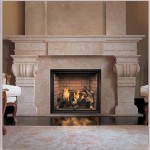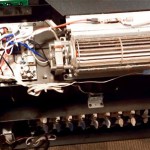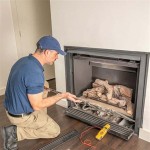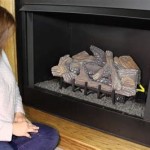Converting a Gas Fireplace to a Wood-Burning Fireplace: Understanding the Costs
Converting a gas fireplace to a wood-burning fireplace is a significant home renovation project that involves altering the structure and functionality of an existing fireplace. Many homeowners consider this change for reasons ranging from aesthetic preferences to a desire for a more authentic fireplace experience or reducing reliance on gas utilities. However, understanding the associated costs is crucial before embarking on such a project. These costs can vary widely depending on several factors, including the existing fireplace structure, the complexity of the conversion, local building codes, and the choice of materials and labor.
The process is more complex than simply removing the gas components and burning wood. Gas fireplaces are designed differently from wood-burning fireplaces, particularly in ventilation and firebox construction. A successful conversion requires careful planning and often involves substantial modifications to ensure safety and compliance with building codes. Ignoring these factors can lead to unsafe operation, potential carbon monoxide poisoning, and structural damage to the home.
This article aims to provide a comprehensive overview of the costs associated with converting a gas fireplace to a wood-burning one, outlining the various factors that contribute to the overall expense.
Key Point 1: Initial Assessment and Necessary Structural Modifications
The first step in determining the cost of converting a gas fireplace is to conduct a thorough assessment of the existing structure. This assessment should be performed by a qualified professional and will identify any necessary structural modifications. Gas fireplaces often lack the fundamental requirements of wood-burning fireplaces, such as a proper firebox depth, chimney liner, and adequate clearances to combustible materials.
Chimney liners are crucial for safely venting smoke and combustion byproducts. Gas fireplaces often utilize smaller, less robust liners (or even no liner at all, relying on direct venting) compared to wood-burning fireplaces, which require a larger, insulated liner to handle the high temperatures and corrosive gases produced by burning wood. Installing a new chimney liner is often one of the largest expenses in the conversion process. This can range from a few hundred to several thousand dollars depending on the height of the chimney and the type of liner installed (e.g., stainless steel, clay tile).
The firebox itself may also need modification or complete rebuilding. Gas fireplaces often have shallow fireboxes that are unsuitable for safely containing a wood fire. Expanding the firebox or building a new one from fire-resistant materials like firebrick adds to the overall cost. The cost of rebuilding a firebox can vary significantly depending on its size and complexity, but it generally falls within the range of several hundred to over a thousand dollars.
Furthermore, proper clearances between the fireplace and combustible materials such as wood framing, drywall, and flooring are essential to prevent fires. The assessment will determine if these clearances are adequate and if any modifications are needed to meet building codes. Adjusting clearances may involve adding heat shields or rebuilding sections of the surrounding structure, which can add to the overall project cost.
Key Point 2: Removal of Gas Components and Potential Vent Modifications
Removing the existing gas components is a necessary step in the conversion process. This involves disconnecting the gas line, removing the gas logs or burner assembly, and capping off the gas line. While this might seem like a straightforward task, it requires careful attention to safety and adherence to local regulations. It is highly recommended to have a qualified gas technician or plumber perform this work to ensure that the gas line is properly capped and that there are no leaks.
The cost of removing the gas components is typically a relatively small portion of the overall project cost, usually ranging from $100 to $500 depending on the complexity of the installation and the hourly rate of the technician. However, this step should not be overlooked, as improper removal can create hazardous conditions.
Another potential cost factor is the modification of the venting system. As mentioned earlier, gas fireplaces often have different venting requirements than wood-burning fireplaces. While some gas fireplaces vent directly through a wall, wood-burning fireplaces require a proper chimney that extends above the roofline. If the existing gas venting system is not compatible with wood-burning requirements, it will need to be removed or modified. This can involve removing the existing vent pipe, patching the wall where it penetrated, and installing a new chimney system, which can significantly increase the overall cost.
Key Point 3: Materials, Labor, and Permits Considerations
The cost of materials for the conversion process can vary depending on the chosen aesthetic and functional requirements. Firebricks, mortar, chimney liners, and other fire-resistant materials contribute to the material expenses. Higher-quality materials will naturally increase the cost but can also improve the longevity and performance of the fireplace.
Labor costs represent a significant portion of the overall project expense. Hiring qualified professionals, such as masons, chimney specialists, and plumbers, is essential to ensure that the conversion is done safely and correctly. Labor costs can vary widely depending on the geographic location, the complexity of the project, and the experience of the professionals involved. It is crucial to obtain multiple quotes from different contractors to compare prices and ensure that you are getting a fair deal.
Permits are another important consideration. Most municipalities require building permits for fireplace conversions to ensure compliance with local building codes and safety regulations. The cost of permits can vary depending on the location and the scope of the project. Failing to obtain the necessary permits can result in fines and delays, so it is important to check with the local building department before starting any work.
Finally, consider potential unexpected costs. During the conversion process, unforeseen issues may arise, such as hidden structural damage or unexpected complications with the existing venting system. It is prudent to set aside a contingency fund to cover these potential unexpected expenses. A contingency fund of 10-20% of the estimated project cost is generally recommended.

Want To Convert Gas Wood Fireplace Full Service Chimney

What S The Cost To Convert A Wood Fireplace Gas Orange County Register

Want To Convert Gas Wood Fireplace Full Service Chimney

Wood To Gas Fireplace Conversion In Wisconsin Free Quote Badgerland Waesha

Convert Gas Fireplace To Wood

Can You Convert A Wood Fireplace To Gas The Burning Log

How Much Does It Cost To Install A Gas Fireplace Homeserve Usa

Can A Wood Burning Fireplace Be Converted To Gas The Flame Company
Convert To A Beautiful Wood Burning Fireplace

Want To Convert Gas Wood Fireplace Full Service Chimney
Related Posts








